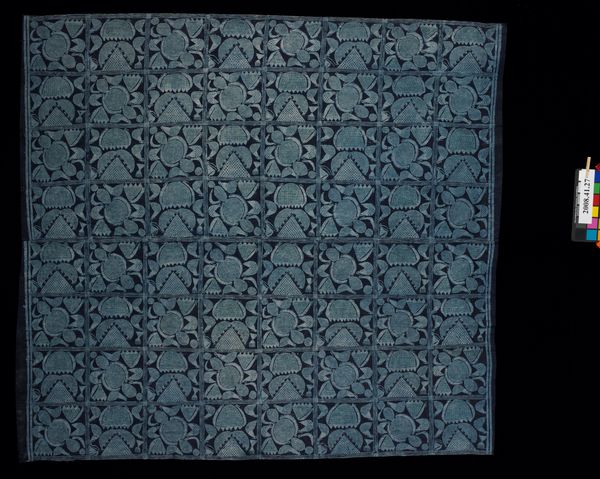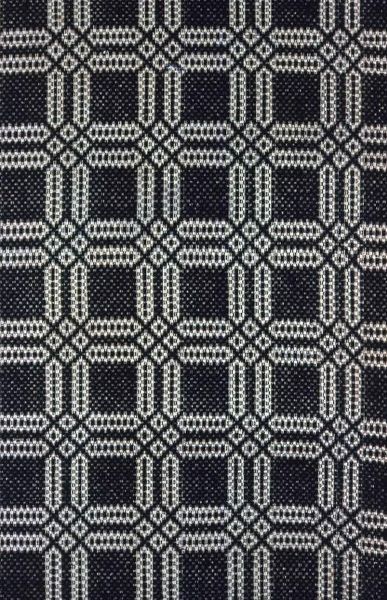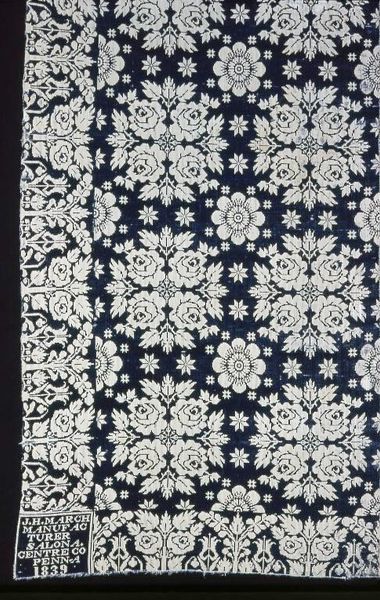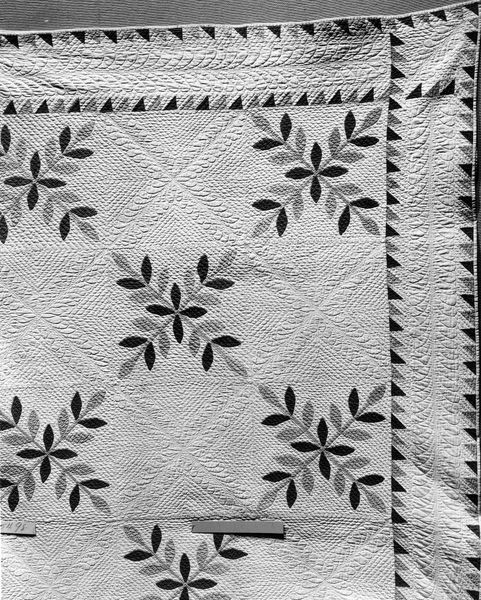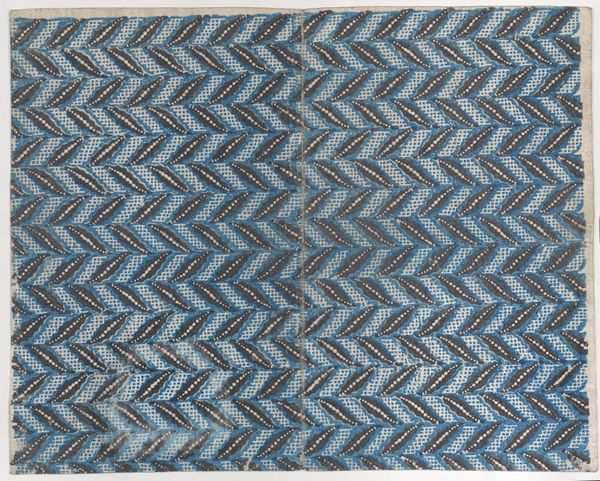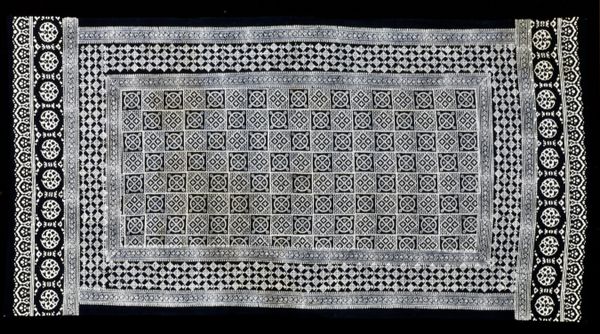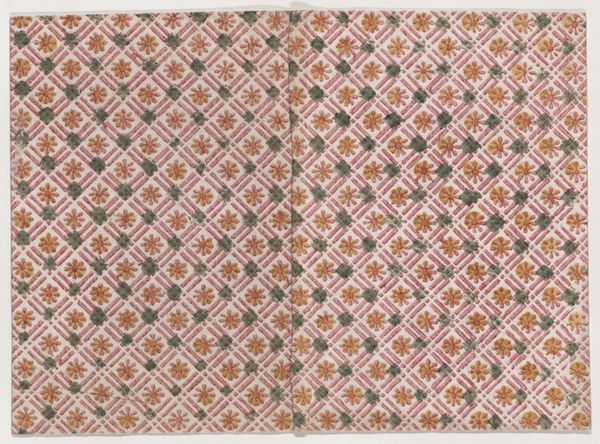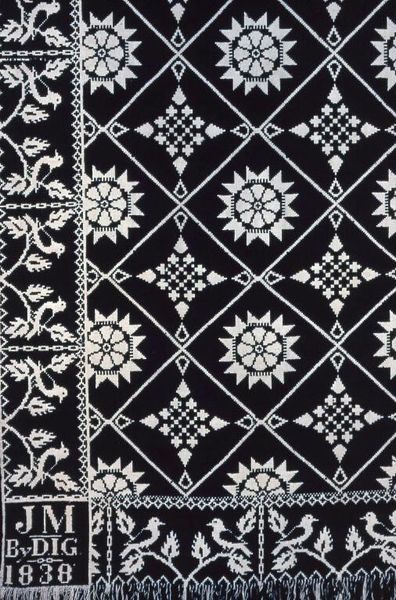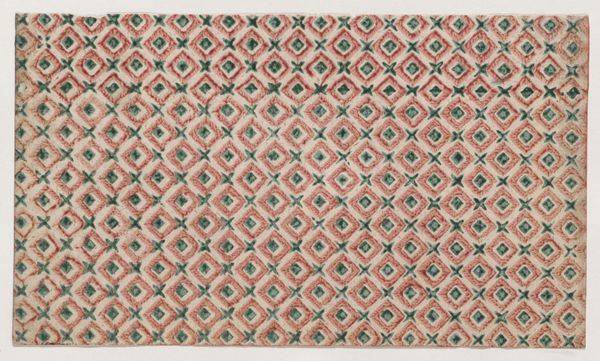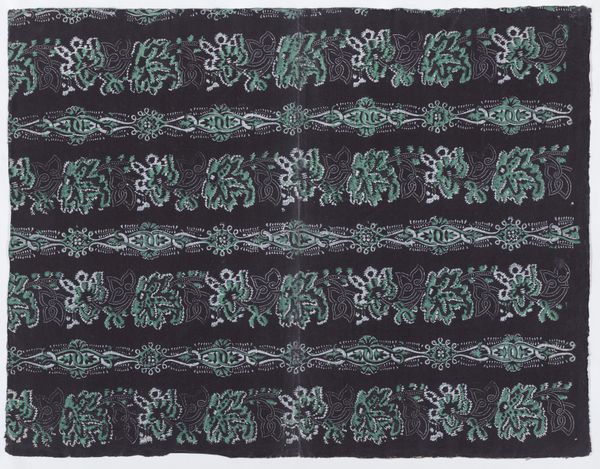
fibre-art, weaving, textile, cotton
#
african-art
#
fibre-art
#
weaving
#
textile
#
cotton
#
textile design
#
yoruba-art
Dimensions: 61 3/8 × 33 3/4 in. (155.89 × 85.73 cm)
Copyright: No Known Copyright
This Adire wrapper was created by the Yoruba people using resist-dyed cotton. It’s an all-over pattern, a grid of indigo blue and white that really vibrates. You know, it's funny, sometimes the thing you think is the most rigid, like a grid, is actually the place where the most freedom can happen. What’s interesting is how the artist has made each section slightly different - the 'white' areas are made up of tiny dots. If you look closely, you can see the hand of the maker in the subtle variations of the dye. The colour is incredible; it seems to shift in value depending on the light, an optical illusion. Seeing work like this reminds me of the importance of process, of letting the material speak. It makes me think of artists like Anni Albers and the women of the Bauhaus weaving workshop, who transformed craft into high art. It’s a reminder that art is always a conversation, a weaving together of ideas across time and cultures.
Comments
minneapolisinstituteofart almost 2 years ago
⋮
Adire is a popular form of surface ornamentation in the Yoruba culture in which designs are created by resist-dye techniques. The maker of this wrapper applied cassava starch to the cloth using a metal stencil to create blocks of lines, dots, and geometric forms. After immersing the cloth in indigo and rinsing the starch away, the designs stayed unstained while the rest of the wrapper colored blue. Rather than being purely decorative, the motifs on adire textiles are often intended to play a protective role and have mystical significance for the Yoruba people.
Join the conversation
Join millions of artists and users on Artera today and experience the ultimate creative platform.
